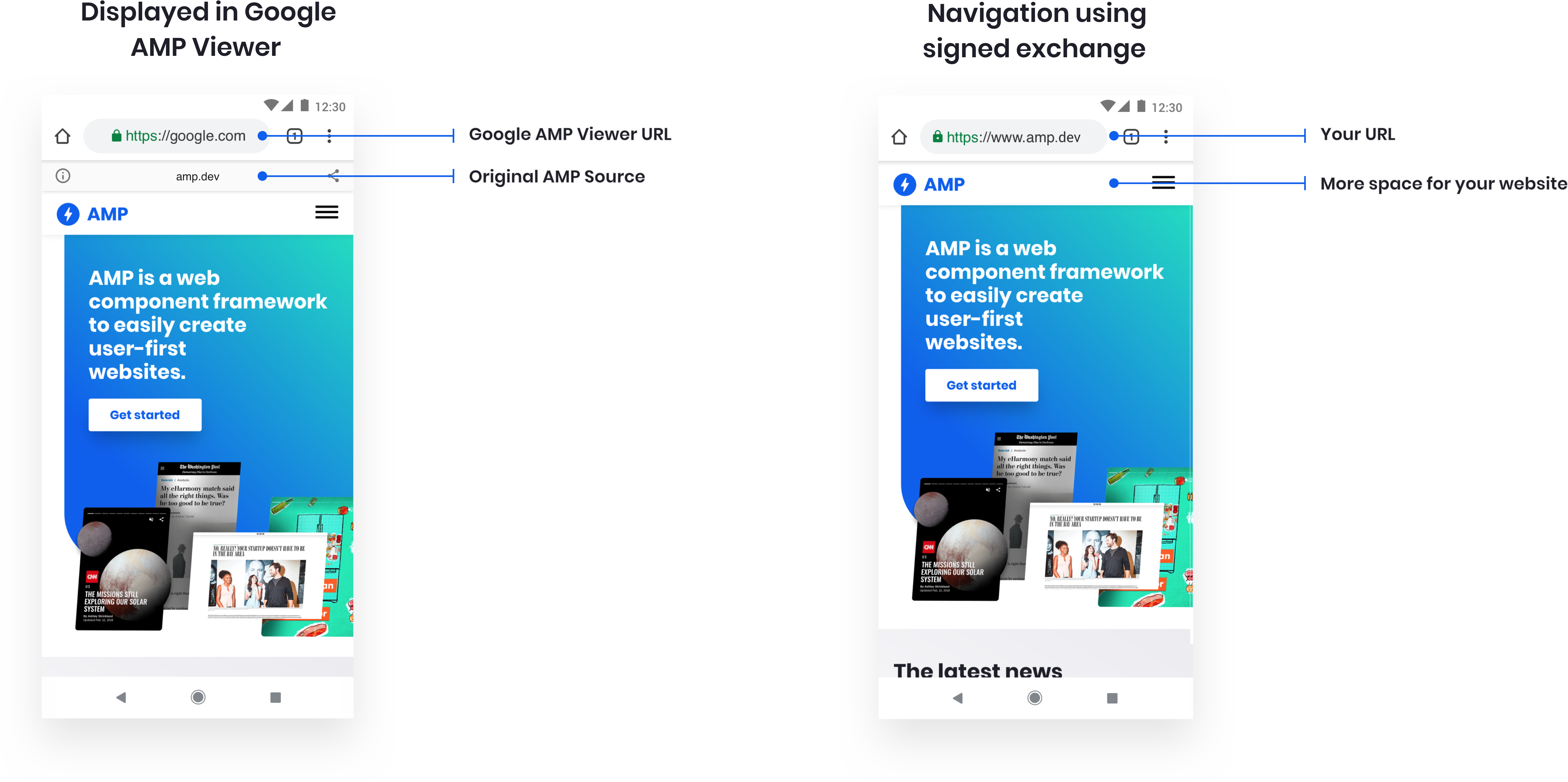AMP が検索結果にどのように作用するかを理解する
Google 検索では、AMP ページをインデックスに登録することによって、信頼性に優れた高速なウェブ エクスペリエンスを実現しています。AMP ページがある場合、モバイル検索ではリッチリザルトやカルーセルの一部として表示されることがあります。AMP であるかどうかが直接 Google 検索のランキングに影響することはありませんが、スピードはランキングに影響します。Google 検索では、そのページがどのような技術を使用して制作されたかに関係なく、すべてのページに同じ基準が適用されます。AMP を使用する利点について詳しくは、AMP プロジェクトの成功事例をご覧ください。
Google 検索では、ユーザーが AMP ページを選択すると、Google AMP キャッシュからページが取得されます。これにより、事前レンダリングをはじめとする各種の読み込み最適化機能を利用できるため、多くの場合、ページは瞬時に表示されます。今のところ、パソコンへは Google AMP Cache や AMP ビューアから AMP ページを配信することはできません。そのため、正規の AMP ページが標準的な検索結果と同じように表示されます。
検索結果での初期表示
AMP ページは、ウェブ上の他のページと同様に、リッチリザルトとして Google 検索に表示できます。ページに構造化データを追加すると、Google がそのページを詳細に理解できるようになります。ただし、構造化データを追加したからといって、検索結果に必ずリッチリザルトが表示されるとは限りません。詳細については、構造化データに関する一般的なガイドラインをご覧ください。
コンテンツが同一の、重複するページがある場合は、正規ページだけでなく、重複するすべてのページに同じ構造化データを実装します。実装について詳しくは、構造化データに関する一般的なガイドラインをご覧ください。
AMP ページはウェブ ストーリーとして表示することもできます。詳細については、Google でのウェブ ストーリーをご覧ください。
ユーザーが AMP コンテンツをクリックした後
ユーザーが Google 検索で AMP コンテンツをクリックすると、AMP コンテンツが以下のいずれかの方法で表示されます。
- Google AMP ビューア: ユーザーは、Google AMP ビューアの上部に表示されるコンテンツのドメインで配信元を確認できます。
- Signed Exchange: ブラウザがドキュメントを本来の生成元に帰属するものとして扱うことを可能にする技術です。

Google AMP ビューアについて
Google AMP ビューアは、Google AMP ビューアをサポートするブラウザでユーザーに関するデータを収集できるハイブリッド環境です。Google AMP ビューアは、特にコンテンツ内でのスワイプ操作が予想される場合など、ユーザー エクスペリエンスの向上につながると Google のシステムが判断したときにコンテンツをレンダリングすることがあります。Google によるデータ収集は、Google のプライバシー ポリシーに準拠して行われ、AMP ページのパブリッシャーが Google AMP ビューアに表示される自社コンテンツに関連してデータ収集を行う場合は、そのパブリッシャーのプライバシー ポリシーに準拠します。AMP ページ内の動作やベンダー統合を選択するのもパブリッシャーです。そのため、そうした選択に関連して発生するコンプライアンス義務もパブリッシャーの責任となります。
Signed Exchange について
Signed Exchange を使用すると、ファーストパーティの Cookie を使用してコンテンツをカスタマイズしたり、分析データを測定したりできます。ページは google.com/amp の URL ではなく、パブリッシャーの URL の下に表示されます。Signed Exchange をサポートするブラウザでは、Google 検索は Google AMP ビューアを使用するコンテンツより、Signed Exchange 形式のコンテンツへのリンクを優先的に扱います。この形式の検索結果をユーザーに提供するには、通常の AMP HTML 形式に加えて Signed Exchange 形式でも AMP コンテンツを公開する必要があります。
現在、Signed Exchange が Google 検索でサポートされているのは、リッチリザルトと基本的な検索結果のみです。カルーセルはサポートされていません。AMP ページ用の Signed Exchange の設定について詳しくは、Signed Exchange を使用して AMP を配信するをご覧ください。
